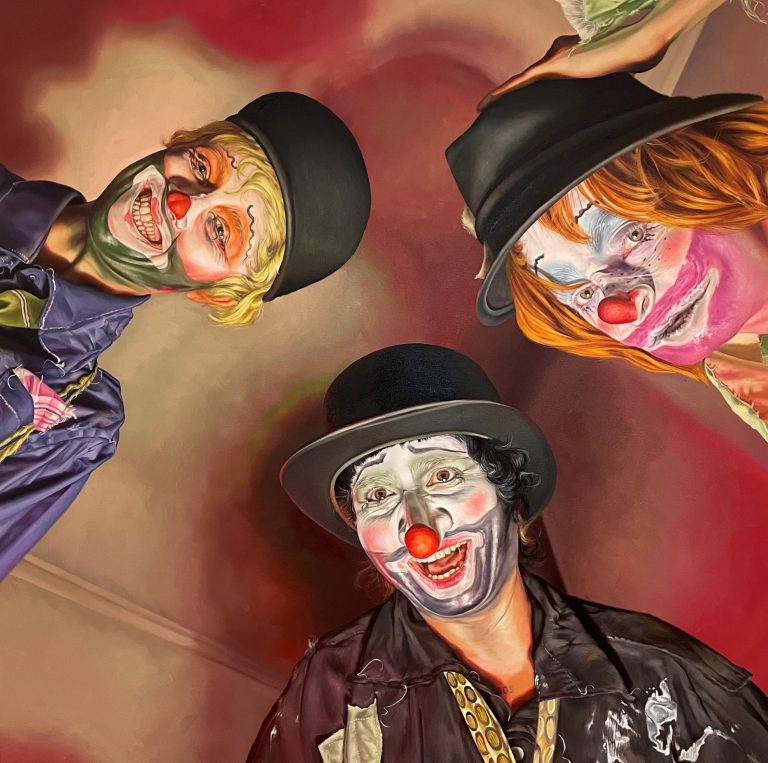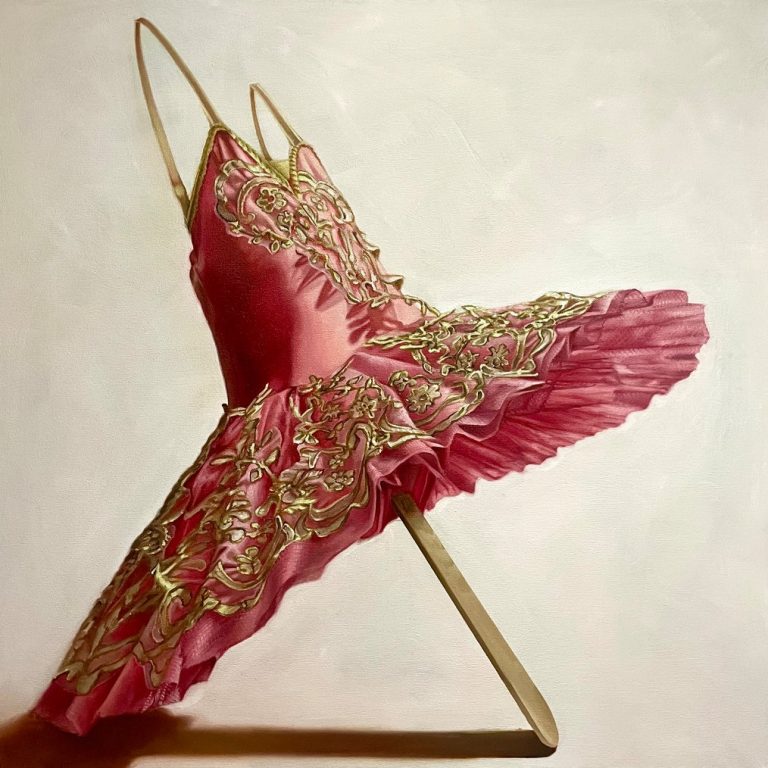Francesca Facciola
This House Knows All That I’ve Done

Francesca Facciola, Can You Feel it, 2022, Oil on canvas, 127 x 127 cm
Carl Jung once dreamt of a house. The two-storey house was an unfamiliar one, but in the dream, he knew it was his. Working his way down, from the second floor to the basement, dream-Jung explored its contents – from Rococo paintings in the upper floors, over medieval furniture on the ground floor, to the walls dating from the Roman times in the basement, … OK, let’s start over.

Francesca Facciola, The One, The Only, 2022, Oil on canvas, 183 x 127 cm

Francesca Facciola, Building a Child Part 1, 2022, Oil on canvas, 76 x 76 cm
I think everyone at one point has shared a dream with someone else. I like to think of my paintings as that: me sharing my fabricated memory story with the viewer in hopes that they form a connection with it. The way that I paint helps enhance that experience. I will obsessively render the surfaces to give them more life.
Francesca Facciola
For This House Knows All That I’ve Done, her first solo exhibition at Contemporary Fine Arts, Francesca Facciola has created a series of new paintings and a mixed media sculpture. Working with familiar tropes and archetypes, – heroes, innocents or outlaws – Facciola explores the boundaries of personal history and the shared unconscious. In her characteristic photorealist style, the artist turns myths and memorabilia of her childhood into uncanny, psychedelic imagery.
Facciola’s obsessively detailed figures are both funny and scary, trippy yet surprisingly composed, tacky but beautiful, casting dark shadows onto dreamlike surroundings. As universal patterns become conscious, they gain forms and colours of our individual histories. We are all both creators and explorers of our own myths.
Jung saw the storeys of the house as layers of consciousness, and the house as a metaphor for the self. Taken up by Louise Bourgeois, personal stories became bricks of the house themselves and “memory … a form of architecture.” At Contemporary Fine Arts, Facciola takes this metaphor into the physical reality of the exhibition space.
